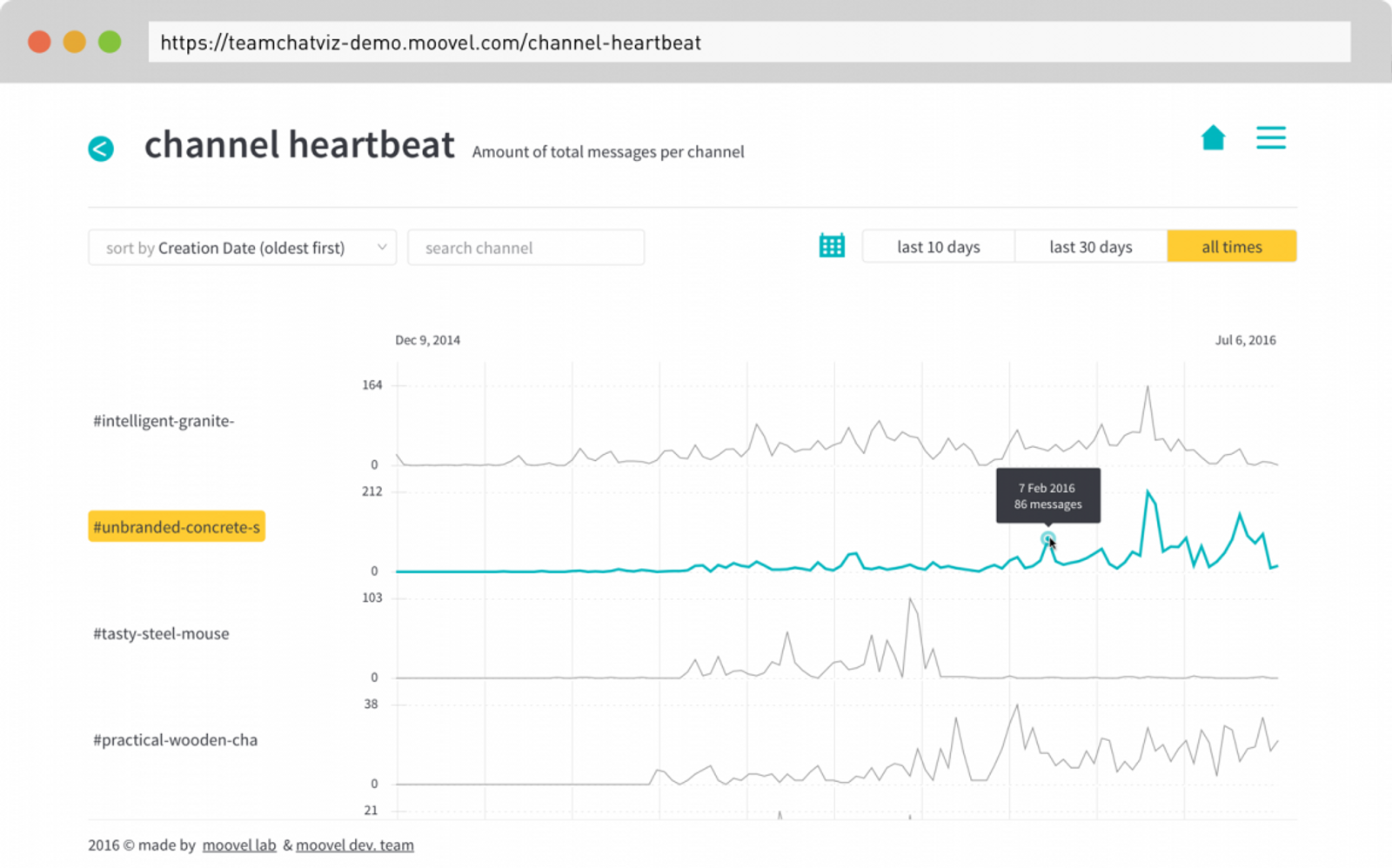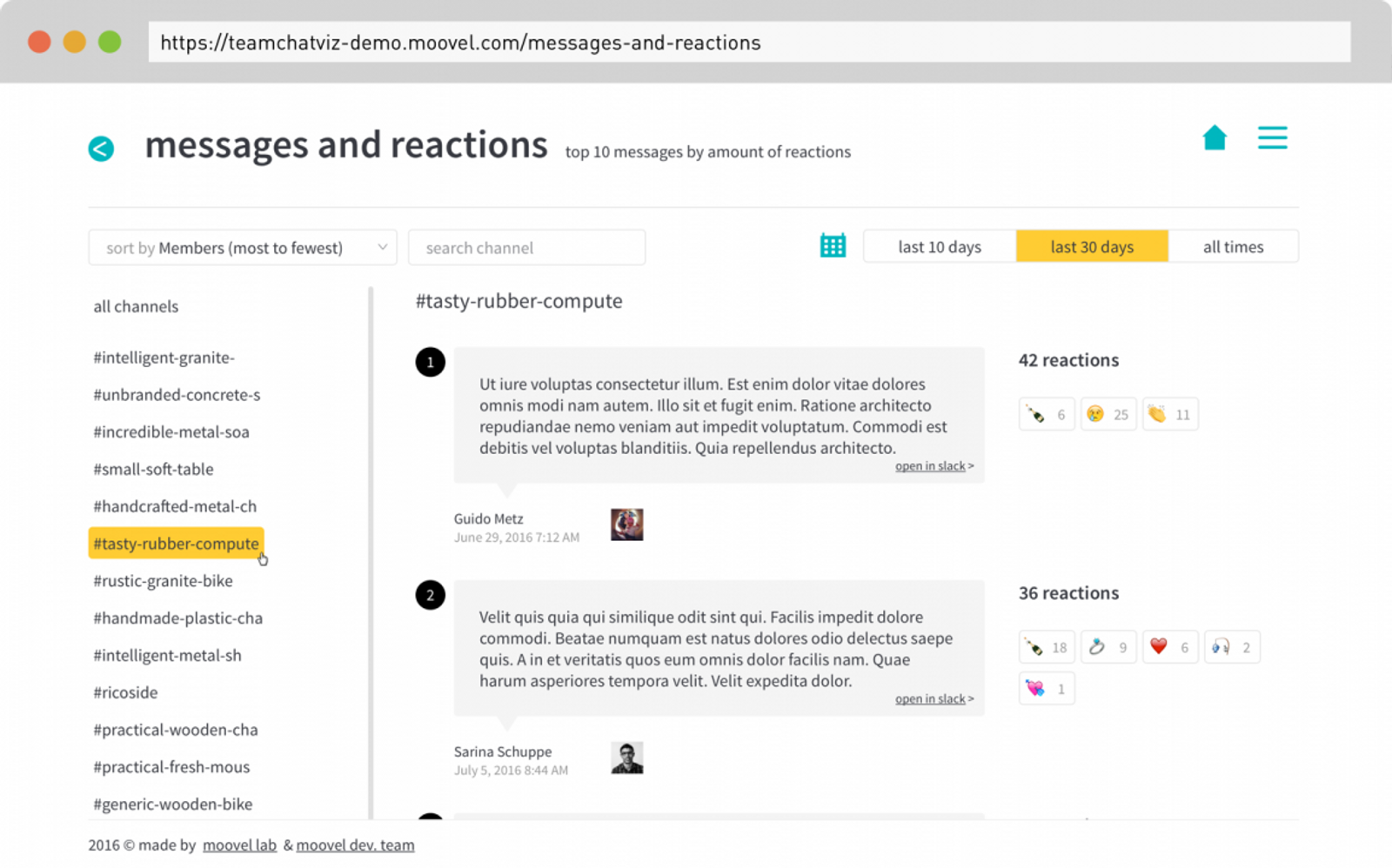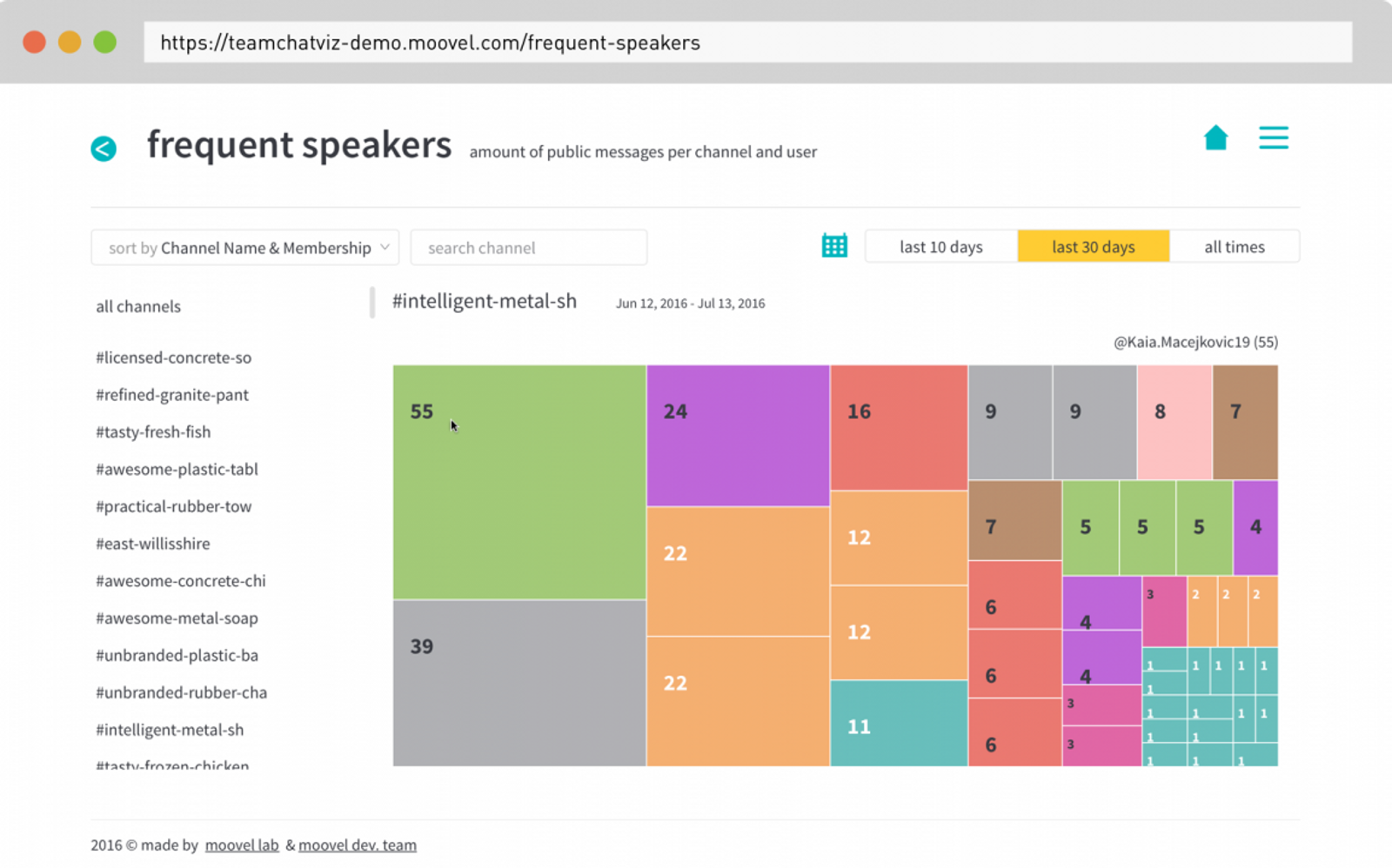teamchatviz — slack stats visualized
How are culture and collaboration across an organization influenced by communication? What if the hidden communication patterns were visible? How might that change how we interact and share knowledge across the team in the organization?
Communication shapes cultures. Yet, how communication flows remains a secret for the most part. Here is a deep dive into your team’s Slack communication statistics. Explore how communication works in your team and learn how communication influences cultures.
How it works
»Slack« is an instant messaging tool that is used for team communication. Communication is organized via channels for certain topics that are open for every team member to join. #teamchatviz enables you to explore your team’s Slack jungle with appealing statistics. Analyze unique graphs and gain insights from your very own Slack team.
By integrating this tool into your Slack app, several data visualizations of all publicly available channels will automatically be created for you. #teamchatviz is not only great for new members to get an overview of the team but also enables long-time users to learn about what’s going on around them.
Visualizations of Slack-chat data
With #teamchatviz we created unique data visualizations showing how your team uses Slack. We tried to avoid creating graphics that imply any value judgments or that give meaning to the numbers. We also tried to find graphics that work universally for any Slack team. Some of the visualizations don’t even work without a human being making sense of them. So please be careful when you do so!
Project Background
The project #teamchatviz was born out of the urge to create and maintain an agile working environment for a fast-growing company. But rather than being a management tool, this visualization served as an organizational intervention which led to more communication and collaboration among the team members from various sites and business units.







